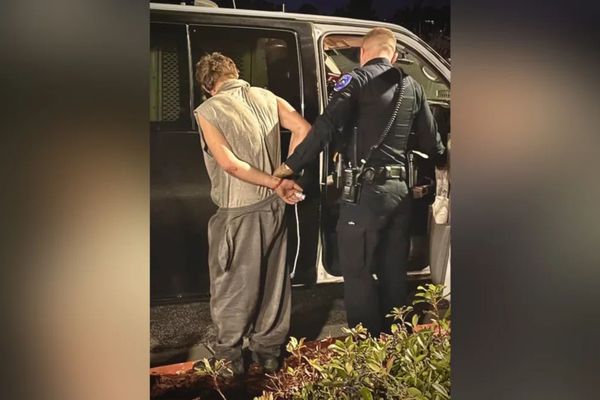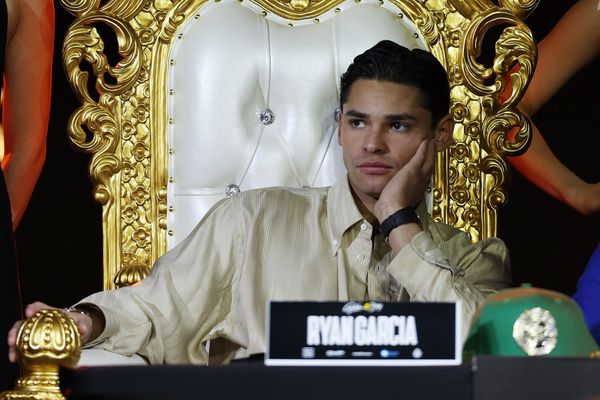Sapphire mining magnate Ray Richardson was raised in a tiny dirt-floor home in Queensland's Gemfields with 10 other siblings.
"We lived in a little old, corrugated iron house here in Anakie, with your wood stove and a little round bathtub and everyone had to use the same water," he said.
Mr Richardson was only 13 when he left school to start crystal mining, but the industry has taken him from humble beginnings to showing famous sapphires at international gem shows in New York.
"It gets in your blood and that's it. We continue to mine sapphires today," he said.
Every year Mr Richardson displays a collection of his locally discovered stones at the region's annual Festival of Gems.
"We keep them just to promote our Australian sapphires and let people see the different colours and people just keep coming back year-after-year to see them and photograph them," he said.
"We don't class them as any value on them because they're museum pieces."
Mr Richardson's great-grandfather Archibald Richardson was the first person to discover sapphires in the region in the 1880s.
Ever since, the Gemfields has been known as one of the largest sapphire-bearing regions in the world.
Mr Richardson is so passionate about the industry, he has tiny yellow sapphires drilled into his front teeth.
The Richardson collection
Mr Richardson said one of his most famous gems is the Stonebridge Green, which had been displayed in England, Hong Kong, Thailand and the United States.
The stone weighs a whopping 202 carats and was found in 1938 by gem miner Frederick Max Stonebridge.
It was stolen in the 1950s, but when it was taken to a local gem cutter, they knew it belonged to Mr Stonebridge and returned it.
Mr Richardson said after changing hands several times, it was sold to an art gallery in Manhattan, New York.
He knew the art gallery owner and eventually bought it back to display locally once again.
Other famous gems in his collection include the Tomahawk Tiger, the Pride of Tomahawk, and the Pride of the Willows.
"You don't find too many stones that size and featured in magazines all around the world," Mr Richardson said.
"People want to see them."
From dull doorstop to worn by Cher
State Library of Queensland research librarian Christina Ealing-Gobold said in the 1930s, the largest black sapphire found anywhere in the world was discovered in the Gemfields.
She said the Black Star of Queensland was found by then 12-year-old Roy Spencer, who kicked a large rock which looked like a "great lump of coal."
Ms Ealing-Gobold said the boy didn't know what to do with it, so he took it home and his family used it as a doorstop.
"This doorstop stayed in their home for another 10 years before his father, who was an amateur miner and gemmologist, decided he'd have a little look at it," she said.
"Once he'd scraped away the edge, this thing looked like a large black star."
Ms Ealing-Gobold said the discovery was so significant, Harry and James Kazanjian, who had a renowned Los Angeles jewellery brand, flew to Australia in 1948 to purchase the stone.
She said Harry Kazanjian, a Parisian-trained lapidarist, studied and X-rayed the stone, and then spent two months painstakingly cutting it.
After being faceted, the Black Star of Queensland weighed 733 carats and it is estimated to be worth about $100 million currently.
"Originally the lump of coal as we call it was more than 1100 carats, so they had knocked it down quite a bit to reveal the black sapphire and the beautiful star in the middle," Ms Ealing-Gobold said.
The President's Heads
Ms Ealing Gobold said not far from where the Black Star of Queensland was found, a woman was walking in the same area and stubbed her toe on a stone "the size of a turkey's egg".
"It was also bought by the Kazanjian brothers … this is the one that they cut into a replica of Abraham Lincoln's head, which weighed 1318 carats," she said.
"Truly a bizarre end to a beautiful Queensland sapphire."
Ms Ealing-Gobold said the deep blue sapphire was nearly 2,000 carats uncut.
She said stones this size were not comfortable for people to wear, so were often made into museum display pieces.
By 1950, the Kazanjian brothers had secured three other large sapphires in the Gemfields which were made into the US Presidents George Washington, Thomas Jefferson and Dwight D. Eisenhower.
Both the Black Star of Queensland and the President head sculptures are overseas.







